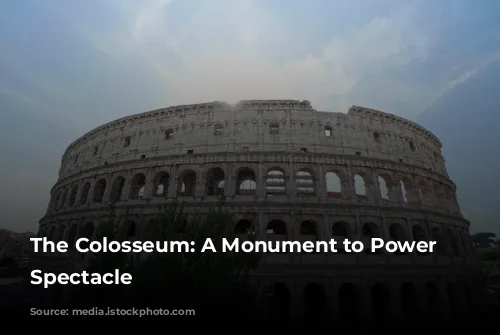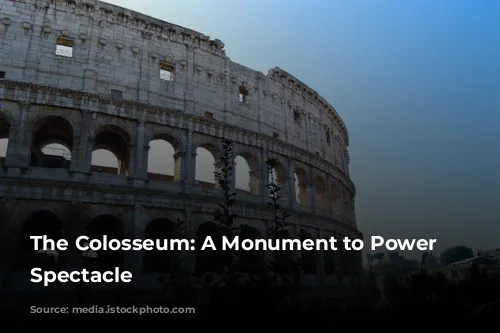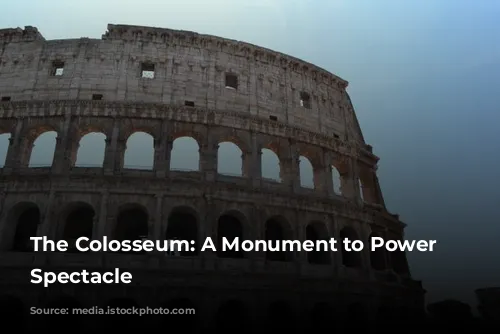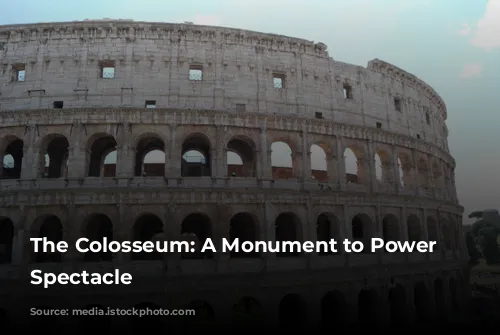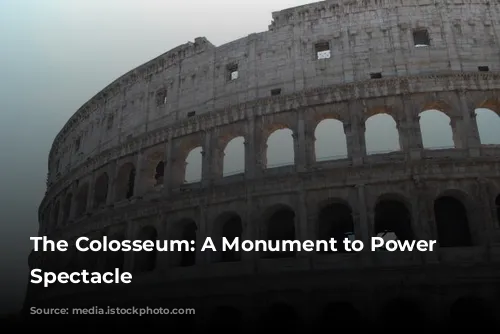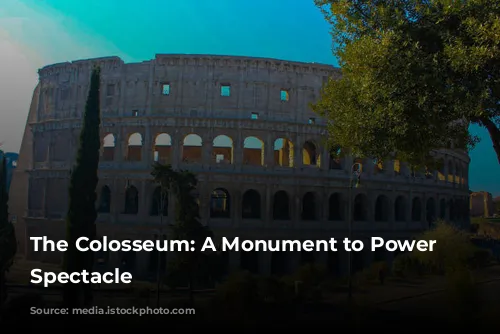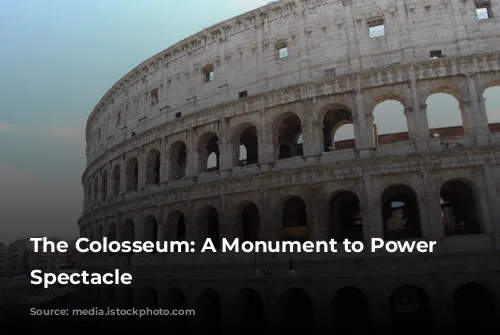The Colosseum, also known as the Flavian Amphitheatre, stands as a towering testament to the grandeur of the Roman Empire. It’s not just the largest amphitheatre in the Roman world, but arguably the most iconic landmark in Rome. The Colosseum was built by Emperor Vespasian of the Flavia family and officially opened by his son, Titus, in 80 A.D.
A Grand Opening
The Colosseum’s inauguration was a spectacle unlike any other. The festivities, which lasted an astounding one hundred days, featured a dazzling array of gladiatorial combats, animal hunts, and theatrical performances. These events were a testament to the Romans’ love for spectacle and their ability to create a truly immersive experience. Historians estimate that as many as 5,000 animals were killed during the Colosseum’s opening. Perhaps the most impressive event was the naumachia, a staged naval battle that filled the arena with water. It was like watching ancient history come to life.
A Name Rooted in History
But why is this majestic structure known as the Colosseum? The answer lies in a medieval prophecy. The Venerable Bede, a renowned monk, foretold that “Rome will exist as long as the Colosseum does; when the Colosseum falls so will Rome; when Rome falls so will the world.” The name “Colosseum” likely originates from the nearby Colossus of Nero, a 35-meter-tall statue of the emperor that once stood near the amphitheatre.
A Masterpiece of Roman Engineering
The Colosseum itself is a marvel of Roman engineering. Imagine the vast structure bathed in the brilliance of pure white travertine stone. It was built in an elliptical shape to accommodate more spectators and had four tiers, the first three boasting a total of 80 arches each. The second and third tiers were adorned with magnificent statues. The sheer scale of the project is astounding when you consider that it was built in less than ten years.
The Secret of Roman Construction
The Romans were masters of the arch, a crucial element of their architectural prowess. The arch’s ability to distribute the weight of heavy structures allowed for the construction of monumental buildings like the Colosseum. Think of the Roman aqueducts, those incredible feats of engineering that brought water to the city – the arch was the backbone of their design. The Colosseum can be seen as a series of aqueducts stacked on top of each other.
A Legacy of Reuse and Ruin
Today, the Colosseum stands as a shell of its former glory, a testament to the passage of time. The outer brick wall is missing three-fifths of its original structure. The Romans weren’t the only ones to marvel at the Colosseum’s magnificence. In the Middle Ages, when the arena fell into disuse, the Romans’ architectural masterpiece was plundered for its precious materials. Popes used the Colosseum’s marble, lead, and iron to build prestigious structures such as the Barberini Palace, Piazza Venezia, and even St. Peter’s Basilica. Even today, the holes in the Colosseum’s columns are visible reminders of this destructive period.
A Theater for the Masses
The Colosseum was designed to entertain a vast audience, capable of holding up to 70,000 spectators. The tiers of seats were cleverly angled to offer every spectator a perfect view of the arena. Entry to the Colosseum was free for all Roman citizens, but seating was carefully arranged based on social status, similar to modern theaters. The top tiers were reserved for the common people, with separate sections for men and women. As one descended towards the arena, the social status of the spectators increased, with senators, vestal virgins, priests, and the emperor himself occupying the front row.
A Roof for All Seasons
The Colosseum also boasted a sophisticated system for managing the weather. Like a modern sports stadium, the Romans used a velarium to protect spectators from the scorching sun. The velarium was a massive linen canopy that could be hoisted over the arena using a system of ropes, winches, and wooden poles. It took the strength of 100 sailors from the Imperial fleet to maneuver this intricate system, their synchronized movements dictated by the beat of a drum.
The Gladiators and Their Stories
The arena was the heart of the Colosseum, where the most dramatic spectacles unfolded. The floor, once made of brick and wood, has long disappeared. In its place are cellars that housed the equipment used to stage the games. These underground chambers held lifts and hoists that were used to bring animals and gladiators into the arena through trapdoors, creating startling and dramatic entrances.
The Life and Death of a Gladiator
Who were these gladiators who risked their lives for the entertainment of the masses? The term “gladiator” derives from the gladius, the short sword used by Roman soldiers. Gladiators weren’t always forced into fighting. Many were prisoners of war who were offered a choice: slavery or a chance to fight for their freedom. Others were desperate men seeking fame and wealth. The profession offered not only a decent wage but also immense popularity, particularly among the women who would pay handsomely for a night with their favorite gladiator.
The Show Must Go On
The Colosseum hosted a wide variety of spectacles, each designed to thrill and amaze the audience. Venationes, hunts involving exotic animals, were a popular draw. Silvae, staged hunts set in a forest-like setting, were particularly impressive, with painters and set designers creating realistic environments. The audience was also entertained by less gruesome performances, such as an elephant trained to write words in the sand with its trunk.
The Battle for Survival
But the main attraction was the gladiators. Twelve different types of gladiators, each equipped with unique weapons and armor, fought for glory and survival. The Retiarius, armed with a net, a trident, and a knife, was a popular type, as were the Secutors who fought with a shield and a sickle. The audience cheered their champions, their excitement reaching a fever pitch during the dramatic final confrontation. If a gladiator was wounded, he could plead for mercy by raising an arm. The fate of the defeated gladiator rested in the hands of the emperor who, with a thumbs up or a thumbs down, determined whether the gladiator would be spared or executed.
The Legacy of the Colosseum
The Colosseum stands as a powerful reminder of the Roman Empire’s dominance and its fascination with spectacle. Although the Colosseum is a symbol of the Roman Empire’s power and the brutality of its games, it also tells a story of the human spirit’s resilience and the desire for entertainment.
After the fall of the Roman Empire, the Colosseum was abandoned. But its legacy continues to inspire and fascinate us. It is a testament to the creativity, ingenuity, and ambition of a powerful civilization. And for tourists visiting Rome, a glimpse of the Colosseum is a chance to connect with the past and experience the ghost of ancient Rome.
